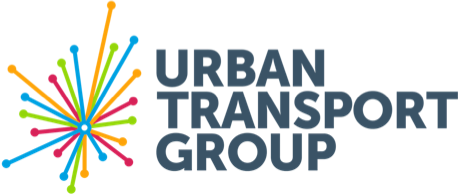New interactive tool enables instant and sharable graphical analysis of urban transport data
Users can share results immediately across social media channels and websites
A powerful data analysis and graphical representation tool has been launched by the Urban Transport Group giving users the ability to interact with a wide-ranging database of raw transport related statistics.
The tool brings together previously separate databases of transport-related data into one source and enables personalised and bespoke analysis across the combined data. The data is drawn from the Office of National Statistics, the Department for Transport and several other large aggregate data sources.
The analysis – either individualised by choosing from a range of parameters to filter the data or by using macro-level datasets pre-loaded - is graphically displayed across a range of chart options, and the final visual representation is capable of being immediately shared across social media channels and imbedded into websites.
The online tool gives users the opportunity to drill down through broad categories - such as bus, tram and train data - and apply precise query parameters to generate highly bespoke analysis. Raw data can be refined by a wide range of user-defined parameters, such as timelines and geographic areas to answer the individual user’s questions. The site is designed to give quick and easy access, and answers, to transport questions that require data to support them.
Dr Tom Ellerton, Researcher at the Urban Transport Group and the lead for UTG on the tool, said it will transform how urban transport data is both analysed and made accessible to a wide audience.
“Although the tool opens up data sets that are have until now been accessible usually only in spreadsheet formats, its real game-changing innovation is the way in which that data is displayed – and shared. You can take complex results and turn that data into the most effective visual representation to illustrate the point you are making.
The visualisation you choose can then be immediately shared through social media, saved for use in reports or uploaded to websites. It turns data into conversations.”
As well as bespoke search queries, the tool also has large base of pre-loaded charts and tables on the topics it covers. All data used in it is official and verified and the data sources used to produce individual analysis is attributed in the resulting visual representation. New datasets can also easily be added on existing or new topics.
The ability of the tool to continuously integrate new data is a major benefit for users, according to Stephen Edwards, Executive Director of South Yorkshire PTE and Urban Transport Group’s Board Director for Capabilities and Capacities.
“The version of the tool we have just launched is only the beginning of its journey. As extensive as the content already is, it can easily be expanded to cover new topics and new areas. For example, in the future we would like to be able to include international datasets so that in time users will be able to compare bus patronage between Sheffield and Stockholm or cycle journeys in Birmingham and Berlin.
Despite its power, innovation and versatility, the tool is open to all and free to use. It is part of the Urban Transport Group’s mission to ensure that everybody - politicians, consultants, students and curious individuals - has access to information about urban transport issues. We hope the tool helps inform everything from government policy development through to the settling of minor disagreements between friends.”
Developed in partnership with Aecom, it has been designed to provide an intuitive user experience for both experienced data analysts as well as casual users however the tool also has a comprehensive user guide and a walkthrough video.
Media contact: James Bates, Urban Transport Group, 0113 251 7204, 07810 304142, james.bates@urbantransportgroup.org

